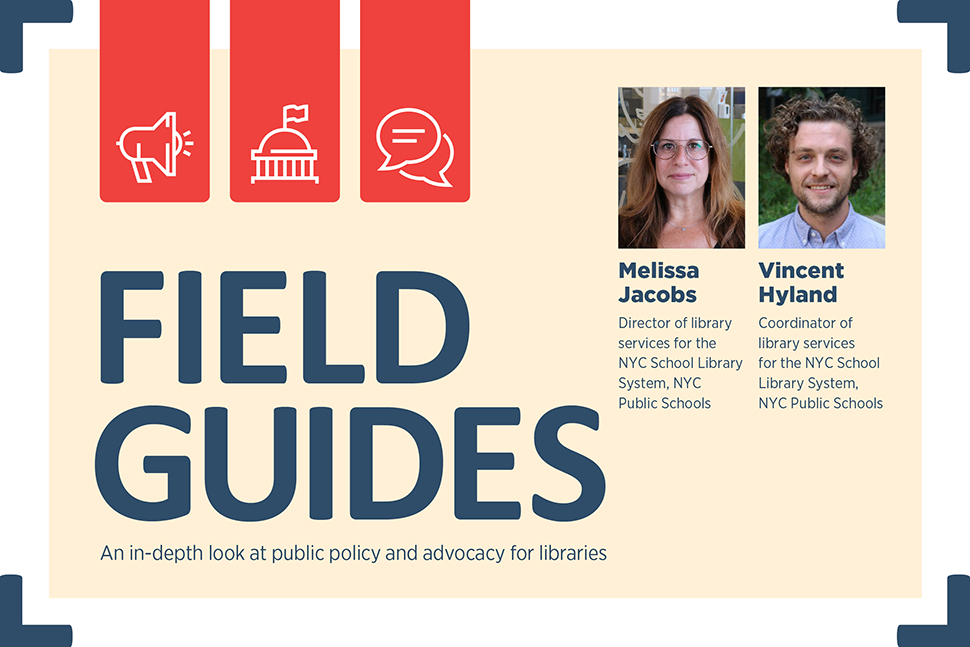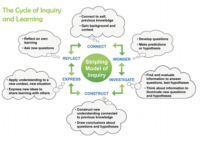
“The kids can’t read.”
Have you been hearing that refrain more often lately? We are certainly hearing it in New York City. Where many in the library profession used to bemoan the fact that the kids don’t read, the conversation has shifted in recent years to the more urgent question of whether they can. Bearing in mind the steep decline in US standardized test scores, education departments around the country are reevaluating the methods that have been used to teach literacy. As a result, many librarians are asking how they can help foster kids’ literacy as well as their love of reading.
The science of reading, a phrase that has become almost ubiquitous in conversations about literacy, refers to the massive corpus of scholarship that investigates the different factors influencing a person’s ability to read. This scholarship, which ranges from neuroscience to sociology, doesn’t refer to a specific curriculum or even to a single set of strategies. But school librarians are well positioned to support the science of reading in their schools.
While we all hope that our students will become lifelong readers, those who do not still need to function in a society that bombards them with information in innumerable formats. To be literate is to be able to comprehend, interpret, and assess information, no matter how it is presented. Literacy also means being able to articulate one’s feelings about that information in speech and in writing. With an eye to this core purpose of literacy, librarians can provide the kinds of experiences that likely will not be covered during phonics instruction.

In New York City, we are connecting the science of reading, Scarborough’s Reading Rope, and Barbara Stripling’s Model of Inquiry to build and strengthen literacy. The science of reading tells us that these skills must be taught explicitly before they can coalesce into a person’s ability to read. It is essential that all the strands in the reading rope are taught across all grade levels. This is especially true now, given that many students have gone without this explicit instruction in phonics and decoding for years. While many school librarians are not trained as reading teachers, we can support the development of skills essential for students to become information-literate, civic-minded adults.

The lower strands of the rope include the skills of phonological awareness, decoding, and sight recognition. A thoughtfully selected read-aloud activity, accompanied by deliberate questioning, rhyming games, and explicitly recognizing word patterns, can model the process of interacting with text and the way text relates to the sounds of language. Additionally, school librarians support skill-building in the upper stands of the reading rope when they lead students of any age through cycles of inquiry.
Looking at former ALA President Stripling’s model for teaching through inquiry alongside Scarborough’s Reading Rope can help us see the natural overlap between library work and the core tenets of the science of reading. For students to build background knowledge, for example, they must connect to their prior knowledge and experiences. To investigate a topic on their own, they must understand language structures and use verbal reasoning to draw inferences. To construct meaning, they must understand how to use and apply evidence gathered from print, digital, or both forms to draw a conclusion. While other teachers may receive training in inquiry-based teaching, it is at the core of everything librarians do. No one is better prepared to teach it than we are.
Students must have opportunities to engage in inquiry and apply the reading skills they learn in the classroom to the stories and information they discover in the library. They must be able to apply and practice this literacy before they can cement and benefit from this learning. Herein lies the combined value of the multifaceted work of school librarians.
Beyond the world of literacy instruction, we know good pedagogy helps students experience interdisciplinary learning that culminates in authentic, real-world assessment. This type of learning is highly engaging for students and realistic in its application of knowledge and skills.
Librarians should see the realignment of literacy teaching practices as an opportunity to display the full range of our expertise.
As instructional leaders, librarians can be professional developers and collaborative partners who train their colleagues in these concepts and facilitate their execution in schools. School librarians in New York City built grade-level exemplars of such projects, called “culminating products,” that could be used either in stand-alone library classes or in collaboration with teachers.
The science of reading may seem intimidating or daunting. It may also be tempting to feel cynical or dismissive of it as just another buzzy phrase. Librarians should, however, see this realignment of literacy teaching practices as an opportunity to display the full range of our expertise.
As we return to school, we know librarians will continue to curate expansive and diverse collections with materials in multiple languages and multimodal formats like audio, large print, and digital content. We will maintain flexible, accessible spaces in which students feel safe and accepted. But to stay relevant amid these changes, we must do more.
We encourage you to look closely at the curricula being used in your schools or districts. Learn the vocabulary of the science of reading, and use it to educate colleagues about how library programs and services connect. Volunteer and participate in science-of-reading training. Do not let administrators marginalize your work in this regard. All of this will help you grow your own practices, maximize your strengths, and holistically support students in their literacy development.
Let it be a point of advocacy for your program and for our profession. We are the ones with the books, and we know what to do with them.


